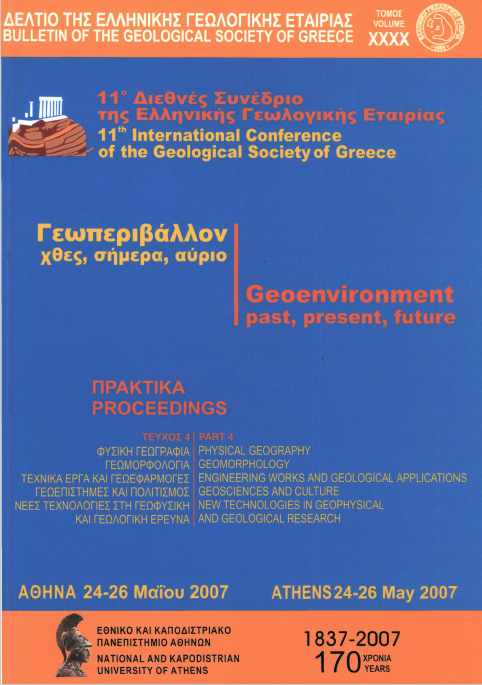The contribution of clay minerals in the landslides occurrence within Pindos flysh formation

Abstract
An engineering geological investigation of the "Potamouli" area located west of Grevena town, for a water dam foundation, has revealed some geotechnical problems related to landslide phenomena. Landslides are of limited extent in the reservoir area, but significant instabilities were identified within the broad catchment basin. The basin is built up mainly by the chaotic unit of Pindos flysch formation, which consists of a silty clayey matrix with heterogeneous inclusions of rock masses in diverse frequency and size. In order to investigate the major contributing factors to landslide occurrence, several physical properties were measured, with the results suggesting that the overall mechanical behaviour of the unit is determined by the clay matrix properties. The mineral composition of the less than two micron fraction of this material was determined by X-ray diffraction. The clay minerals present are illite and montmorillonite. The percentage of montmorillonite reaches the 10% of the matrix fraction and may exert great influence upon the Atterberg limits, swelling, water adsorption, and shrinkage of the matrix material. Montmorillonite absorbs water between its individual silicate layers with resulting high swelling and low frictional resistance becoming by itself a contributing factor to the failures. The presence of expandable clay minerals within the chaotic unit of the Pindos flysh, may indicate that the remove of loose soil cover from the slopes of the reservoir area during the construction of the dam, may be inadequate for preventing future landslides, and a sealing up process may be needed.
Article Details
- How to Cite
-
Vacondios, I., Konstantopoulou, G., & Karadassi, S. (2007). The contribution of clay minerals in the landslides occurrence within Pindos flysh formation. Bulletin of the Geological Society of Greece, 40(4), 1741–1748. https://doi.org/10.12681/bgsg.17106
- Section
- Engineering Works and Geological Applications

This work is licensed under a Creative Commons Attribution-NonCommercial 4.0 International License.
Authors who publish with this journal agree to the following terms:
Authors retain copyright and grant the journal right of first publication with the work simultaneously licensed under a Creative Commons Attribution Non-Commercial License that allows others to share the work with an acknowledgement of the work's authorship and initial publication in this journal.
Authors are able to enter into separate, additional contractual arrangements for the non-exclusive distribution of the journal's published version of the work (e.g. post it to an institutional repository or publish it in a book), with an acknowledgement of its initial publication in this journal. Authors are permitted and encouraged to post their work online (preferably in institutional repositories or on their website) prior to and during the submission process, as it can lead to productive exchanges, as well as earlier and greater citation of published work.



